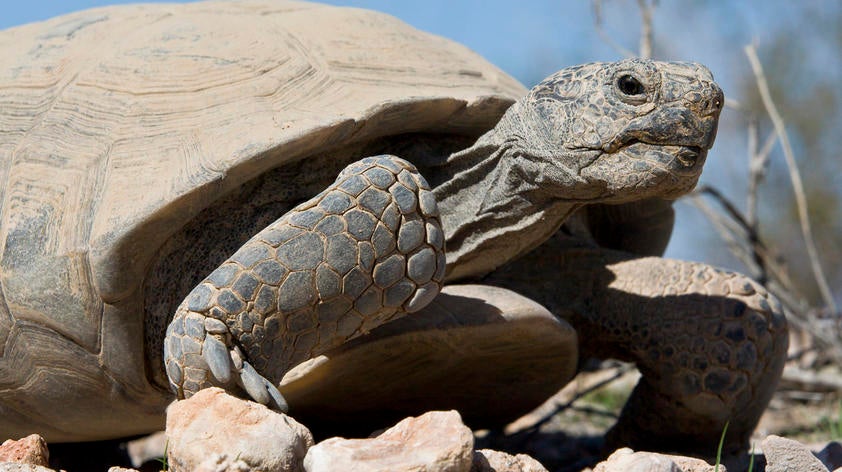
A difficult decision
Desert tortoises are a long-lived species inhabiting the Mojave Desert. They take years to reach adult size and maturity and much about them is slower paced than in many mammalian species – although they are quicker on their feet than you might think! They are adapted to living in a desert environment but are one of many species facing progressive habitat loss and fragmentation. They were listed as federally threatened in 1989, in part due to a disease called upper respiratory tract disease. This is an infection of the nasal cavities caused by mycoplasma species that can persist in individuals for many years.
There is an approximately 100 km2 area south west of Las Vegas, Nevada that is home to a few hundred desert tortoises. This area is enclosed to neighboring habitat, in part by mountains and in part by fencing including fencing alongside the I-15 to reduce traffic casualties.
A simple solution proposed to improve connectivity to neighboring areas is to strategically remove fencing or provide under-passes. Improving connectivity between fragmented desert tortoise populations may increase chances for long-term population sustainability and species survival.
But there are also risks to consider.
Some data suggests that the tortoises within the enclosed area have a higher prevalence of upper respiratory tract disease than tortoises outside of the enclosed area. Data also suggests there is an increased risk of mycoplasma transmission to tortoises outside of the fence and thus an increased risk for tortoises outside the fence to show clinical signs of disease if populations were to mingle. Tortoises within the enclosed area might be harboring unknown pathogens – several of them include former pets that were released here from the Desert Tortoise Conservation Center.
However, the fence itself is not impermeable to disease and tortoises are not expected to charge out of their current home ranges if it were to be removed.
Decisions regarding management of free-ranging animals can be very difficult. Especially when confronted with many obstacles, conflicts of interest, and lack of data to estimate outcomes accurately. Mentioned above is just a little window into the project. One has to consider long-term benefits over potential short-term risks and the risk of lack of action. It has been interesting to be part of this multi-institutional project and stakeholders will continue to meet until a course of action is determined.













